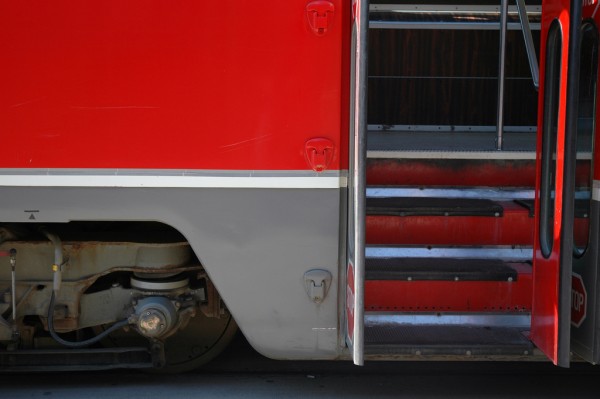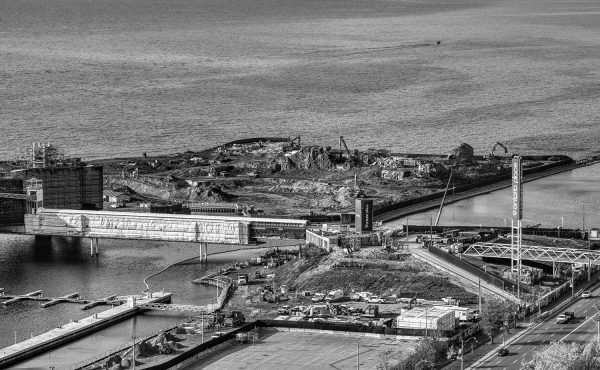Last week, mayor-elect John Tory went out of his way, via drive-time interviews on talk radio, to assure drivers that their commute would be easier by next year. Sync’d up traffic lights, coordinated construction schedules, tough love for developers who can’t stay inside their hoardings – it’s all coming, said Tory, who promised, in an oddly redundant gesture, to name himself his own traffic “czar.”
Who knows whether individual commuters will actually have a better driving experience come 2016. Of this I’m certain, though: the city will concoct some metrics to demonstrate that aggregate flow has improved. And the rest of this deliverable will be achieved through the dark art of persuasion, in much the same way that politicians hereabouts used to campaign on cleaning up the city and then spent the rest of their term boasting about new trash cans and planters full of flowers.
It’s almost impossible to measure experience, so the sleight of hand involves telling voters over and over again that [insert unquantifiable problem here] has improved. And presto, progress.
Yesterday, Tory emerged from his bustling lair again to heap diplomatic praise all over a new report from the Amalgamated Transit Union Local 113, which laid out several dozen actions the city needs to pursue in order to get transit back on, um, track. But unlike Tory’s damn-the-torpedos talk from last week, the mayor-in-waiting was something well short of definitive when it came to declaring that any particular part of the city’s transit service would be in better shape by next year.
Admittedly, many of the ATU’s recommendations for service improvement have medium term horizons because they involve the purchase of rolling stock or buses, and that’s assuming the city has a means of paying the suppliers.
But there’s one particular solution, cited in this space on election day, that the TTC says it can implement quickly, which is transitioning the streetcars to all-door/proof-of-payment entry and then hiring new fare inspectors to ensure that commuters aren’t filching their ride. The commission brass touted this idea back in August, and noted that the move can be achieved on a tight timeline because it only involves the hiring of said inspectors. No RFPs, no delivery lag-times, etc.
Yes, the TTC expects to spend an additional $6 million on inspector salaries, but those outlays would be offset by increased ridership on the streetcar lines. The staff report’s comment, quoted in my previous column, bears repeating:
“Such an approach would bear huge benefits in terms of improving overall customer journey times, transit reliability (i.e. a reduction in gapping and bunching) and fare evasion rates.” This move would also allow our streetcar lines to function, from a fare collection perspective, in the same way as just about every surface rail transit service in the known universe. In other words, a quick win.
At a scrum yesterday, TTC chief executive Andy Byford said he’s going to meet with Tory today and talk about short-term fixes, although he declined to scoop himself by sharing his advice. But he did say, when I asked about the all-door boarding recommendation, is that it’s “something we want to achieve in 2015” on all streetcar lines, provided he can find funding for more fare inspectors.
Asked during an afternoon media scrum about that all-door proposal, which would measurably improve the rider experience for tens of thousands of harried streetcar riders each and every day, Tory was non-committal, and said all such solutions depend on money. “You still have to figure out to pay for it.”
His circumspection is likely born of natural caution. But Tory’s reluctance to loudly back an almost gift-wrapped transit service improvement with a small price tag is more than a little perplexing.
After all, he wants to be seen (and remembered) as the transit mayor and a kind of action superhero – the guy who delivered big fixes at a pace not normally associated with matters Torontonian. The dozens of gentrified and gentrifying neighbourhoods arrayed along Toronto’s streetcar lines didn’t exactly line up in lock-step behind Tory (some backed Olivia Chow, some backed him). Yet they desperately need relief, as do the drivers who end up stuck behind slow moving rush-hour streetcars that struggle to cram in ever more riders.
My advice: don’t dither on this one, John. It will be the only low-hanging fruit on the transit solution tree.






7 comments
CC to MPP’s at Queens Park and MP’s at Parliament Hill.
Another quick-to-implement, low-cost, low-hanging fruit in the report is running streetcars based on headway (minimum time between vehicles) rather than schedules. Would reduce bunching and improve service (and the perception of service by riders). It’s good to hear that the drivers, through their union, are supportive of this idea.
I don’t know if he should dp ot. It seems to me the main conflict gifted to the city by the Ford Bros. has the streetcar at its symbolic heart. To the trolls of Ford Nation, streetcars are viewed as everything evil and backwards about the latte-sipping downtown elite, who don’t understand the real world… and are so effective a message conveyer, they are used as a symbolic shorthand for LRTs.
Surely there is substantial danger, if Mayor Tory’s overall goal involves healing the rifts between Ford Nation and the rest the city, or just generally securing his re-election by broadening his coalition of voters, of making his first “easy win” the delivery of six million dollars to improve a transit component that is: 1) unusable by the city that didn’t vote for him; and, 2) suggests an investment in the very symbol that they are so opposed to.
R.
All the stakeholders need to get together to help rescue the TTC from the beginnings of a massive service & funding crisis.
I say this because if you think things are bad now, be prepared for what happens when a significant portion of the bus, streetcar and Scarborough RT fleet cannot be put into service in a reliable manner. Things are bad now and going to get worse.
The time has come for the province to step up with the funding to help move the TTC forward to an era based on service. That means providing the $6 million for all-door loading and more fare inspectors, more PRESTO card readers for the back doors of vehicles (cost unknown) and the $20 million to cover the potential shortfall associated with a 2 hour transfer.
Ironically, the Big Move would have provided $300 million annually for local transit…($30 million for the TTC if divided equally, $200-240 million if based on percentage ridership)…which would have covered those costs…but it looks like that money is off the table now.
TTC also has to work actively with Toronto Transportation Services and the Traffic Police to find other low hanging fruit…enforcement of turning & parking & standing restrictions would be a great place to start. In the long term the Transit Priority system is going to need a serious upgrade.
Cheers, Moaz
Tory needs to gain back some political capital before he can find solutions. Some options include;
1. Modify Eglinton Connects so that a minimum of 4 lanes are kept at all locations.
2. Elevated Eglinton from DVP to Kennedy (and Brentcliffe to Don Mills) to eliminate transit/passenger car conflicts.
3. Pledge to keep the East Gardiner and not allow it to be removed.
Once these are done, you can consider the short term improvements such as banning turns (or cars altogether) from Queen and/or King during rush hour.
@Walter that is a good solution, remain car centric, add more car infrastructure. Then take a look at what can be done for the TTC, anything as long as the car remains priority. Works well now so why would it not work in the future.
@Steve. The thing is that the bike and transit crowd needs to compromise for once.
1. Eglinton is currently 5 lanes. It can be reduced to 4 lanes (which are 0.25m narrower than currently), and that will create 4m for bike lanes and sidewalk. The ridiculous proposal to go down to 2 lanes at Y-E is a kick in the teeth to car drivers. 4 lanes is a compromise.
2. Eglinton can be reduced to 4 lanes, as currently planned, plus the odd turn lane – down from the current 6 lanes. Elevating the ECLRT is a compromise to maintain some traffic flow, improve transit, and give lanes and space to bike and pedestrians.
3. All mayoralty candidates want the Gardiner preserved, as do 90% of Torontonians. This is just stating the obvious.
I am not sure why you think that reducing cars from King and Queen is a car-centric policy.